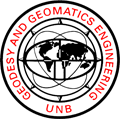50th Anniversary Celebrations
The Department of Geodesy and Geomatics Engineering (GGE) at the University of New Brunswick in Fredericton celebrated its 50th anniversary in 2010. It was established in 1960 as a program in the Department of Civil Engineering and became the fully-fledged Department of Surveying Engineering in 1965. The department changed its name to Geodesy and Geomatics Engineering in 1994 to better reflect the interdisciplinary spectrum of its activities.
The department was the first in English-speaking Canada to offer university education in geomatics–the discipline that encompasses the art, science, and technology involved in collecting and managing geographically referenced information. This information can come from a variety of sources including earth-orbiting satellites such as GPS, air and sea-borne sensors, and ground-based instrumentation.
Geographical information, manipulated with high-tech computer hardware and software, plays an important role in activities such as environmental studies; management of land and marine resources; monitoring of dams, oil fields, and mines for subsidence or other movements; navigation on land, at sea, and in the air; oceanography; real estate transactions; and tourism.
Several universities in Canada and elsewhere have patterned their geomatics programs on the one pioneered at UNB. Yet, UNB's GGE remains a leader–nationally and internationally–in geomatics education and research.
Even during economically difficult times, students graduating from GGE's undergraduate and graduate programs are in high demand with virtually 100% employment.
It is not widely known but GGE researchers helped to map the moon for NASA's selection of lunar landing sites in the 1960s and here at home developed the technology that was used to precisely map Canada's north using satellite technology.
The department's current research strengths span the whole breadth of geomatics, from making GPS work better to helping develop land reform legislation in Brazil. GGE researchers have developed technologies used by Google and have designed systems to ensure safety at open-pit mines in Chile and elsewhere. And GGE is helping to map the floor of the Arctic Ocean to bolster Canada's claim to resources and sovereignty over the Northwest Passage.
The department marked its anniversary with a number of projects and events including a book on its history; a specially designed wall calendar; a plaque commemorating the founding of the department; a special issue of Canada's geomatics journal, Geomatica, in June dedicated to the department; and special sessions at the fall Geomatics Atlantic–the region's annual meeting for geomatics professionals, hosted by the New Brunswick Branch of the Canadian Institute of Geomatics and UNB.


